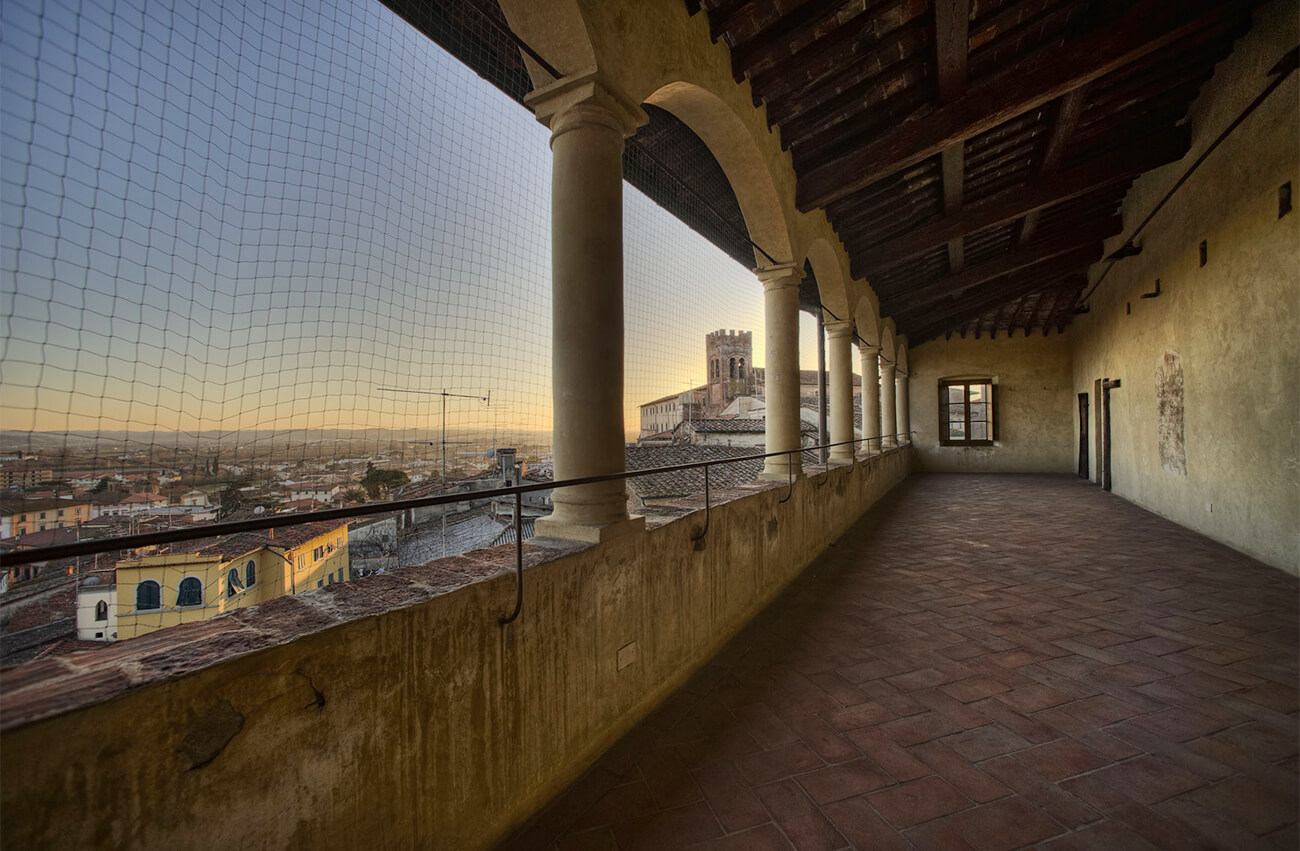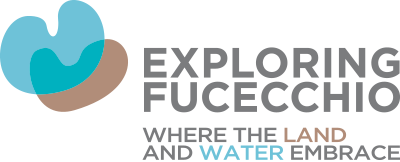
The Civic and Diocesan Museum of Fucecchio
THE MUSEUM OF FUCECCHIO
The Civic and Diocesan Museum of Fucecchio (museofucecchio.it), founded in 1969 as a museum of sacred art, was reopened in 2004 in the new headquarters of Palazzo Corsini, with the connotation of a city museum, divided into three sections: archaeological, historical-artistic and naturalistic.
The collections, owned by the municipality, state and ecclesiastical, illustrate the history of the area between the Cerbaie, the lower Valdinievole and the Valdarno, from the end of the Tertiary to the Modern age, both in its naturalistic aspects and in the ancient population, up to artistic productions from the Middle Ages to the contemporary age.
In February 2021, the collection was enriched with the works created by the master Gino Terreni, or the nucleus of preparatory sketches of the monument to the massacre of the Padule inaugurated in Castelmartini (Larciano, Pistoia) on September 16, 2002 in the presence of the President of the Republic Carlo Azeglio Ciampi.
There are four works – two tempera on paper and two terracottas – which illustrate the process that led the author to the final form of the monument.
The Civic and Diocesan Museum of Fucecchio is part of the Valdarno di Sotto Museum Network and the Empolese Valdelsa Diffuse Museum
With the Museum ticket, moreover, it is possible to visit the panoramic point on the top of the Torre di Mezzo, inside the Corsini Park, born from the insertion inside the structure of an iron staircase and some balconies that allow the vision from the top of the Arno valley.
The Tower can be visited in July and August on Fridays, Saturdays and Sundays at 5 pm-8pm (entrance every 30 minutes – last entrance at 7.30 pm)
The Fucecchio Museum is part of the Valdarno di Sotto Museum Network www.valdarnomusei.it and the Empolese Valdelsa Diffuse Museum www.museiempolesevaldelsa.it
Address: Piazza Vittorio Veneto 27
Telephone: 0571 268262 – 268229
E-mail: museo@comune.fucecchio.fi.it
Opening hours: Friday, Saturday and Sunday 17.00-20.00
Tickets: Full 3 €
Reduced € 1.50: children 6-14 / over 65 / groups of at least 15 / Cartagiovani owners / students of Conservation of Cultural Heritage and Architecture / accompanying children <14 years / disabled people / members of the National Union. Pro Loco Italy
Special reduced € 1: schools (per pupil)
Free: children 0-6 / carers for disabled people / registered journalists / participants educational visits Center for research, documentation and promotion of the Fucecchio Marsh (Lensi Ornithological Collection only)
Guided tours: € 29 (excluding schools)
Museo Civico – Depliant informativo
ARCHAEOLOGICAL SECTION
FROM THE PALEOLITHIC TO THE MODERN AGE
Housed in the rooms on the ground floor of Palazzo Corsini, the archaeological section is organized according to didactic criteria and illustrates aspects of the population and history of the settlements of the Fucecchio territory and of the contiguous areas through materials dating back to the lower Paleolithic and the eighteenth century, collected in the course of surface archaeological research and excavations.
After an introduction on the appearance of the territory and the marine and continental Pliocene and Villafranchian fauna, the Palaeolithic and Mesolithic finds from the Cerbaie are exhibited. The presence of the first stable settlements of farmers and breeders of the Neolithic and the Metal Ages is then documented by ceramics, lithic and metal industries, among which the materials of the Bronze Age village (around 1500 BC) of Stabbia are of particular interest. . The large chronological span corresponding to the Etruscan and Roman ages is unfortunately the least documented. In the imperial age, in addition to the traces of centuriations and rural settlements, some epigraphic data concentrated at Ponte a Cappiano indicate the existence of a more substantial inhabited center, including the funerary epigraph of Tiberius Iulius Ianuarius and a votive altar in marble.
Two rooms are dedicated to the territorial lordship of the Cadolingi counts, the foundation of the castle of Salamarzana, the extinction of the family and the birth of the castle of Fucecchio.
The narration, in addition to original finds, is entrusted to highly effective reconstructive images and videos that illustrate the various aspects of this process. Thanks to 3D scanning and printing techniques, the epigraphs of the Cadolingi are collected for the first time from all over Tuscany, while the techniques of virtual reconstruction of the ancient landscape allow to observe the transformations of the landscape, from the Salamarzana to the municipal Fucecchio, the same one that Leonardo depicted in the early sixteenth century.
The next room is dedicated to the production of ceramics which, between 1500 and 1800, constituted one of the most important economic activities in Fucecchio, completely disappeared and rebuilt through archaeological finds and archival documentation.
The last room illustrates an archaeological history of the Arno, from the Etruscan age to the Middle Ages. The role of the Valdarno trade route is illustrated by the examples of transport amphorae, of various origins and contents, witnessed along the river that allow you to follow the evolution of trade relations between the Arno and the Mediterranean for over a millennium. There are also exhibited the objects on board the Empoli wreck, which illustrates the mercantile activity along the river in the Middle Ages, and the large oak mill gear with the plastic and virtual reconstruction of the functioning of the mechanism.
ARTISTIC HISTORICAL SECTION
PAINTINGS, SILVER AND SACRED ART OBJECTS
Ordered on the noble floor of the building, the section collects paintings and sacred art objects from the churches of the center and the territory, in particular from the abbey church of San Salvatore and the Collegiate church of San Giovanni Battista, where works from the churches and religious congregations suppressed in the Leopoldina age, dated between the 13th and 18th centuries.
Among the most ancient paintings, for example, the “Madonna in Glory with Saints”, once inside the Collegiate Church, the work of an artist recently identified with Giovanni di Ser Giovanni called Lo Scheggia, brother of the famous Masaccio, an excellent example of a minor master of the Renaissance, and the “Madonna and Child” by Zanobi Machiavelli, a Florentine painter linked to Filippo Lippi.
In the main hall, instead, the works of Giovanni Larciani or from Larciano, once known as the Master of landscapes Kress, find worthy accommodation. His is the “Nativity and Saints”, surmounted by a lunette representing the Trinity among the Evangelists.
In addition to the silverware, among which the reliquary of the cross in rock crystal from the fifteenth century, a chalice from the same period and a rare water tower with a brass refreshment from the sixteenth century, the collection of sacred wallpapers stands out for its variety and richness, allowing an interesting excursus on styles and techniques of textile manufacturing in the 17th and 18th centuries. Of great interest are the Italian-made fabrics, especially those from Venice.
To this original nucleus of the museum is added, at the end of the exhibition, the collection of works that the artist from Fucecchio Arturo Checchi, active from the first decade of the twentieth century to the sixties, wanted to donate to his native town by testamentary will.
NATURE SECTION: “ADOLFO LENSI” COLLECTION
AN ORNITHOLOGICAL COLLECTION OF ABOUT 300 EXAMPLES
The core of the section consists of the collection that the doctor Adolfo Lensi composed between the end of the nineteenth century and the early twentieth century with specimens of the local fossil fauna and the contemporary fauna of the Fucecchio Marshes. The latter were collected by himself and others were added for donations or purchases for a total of about 300 specimens. The collection, kept in the Villa Lensi near Ponte a Cappiano until its purchase in 1978 by the Municipality of Fucecchio, after a careful conservative restoration, is on display on the top floor of Palazzo Corsini.
In the first room there are specimens sorted by the types of environment of the Padule di Fucecchio and the surrounding areas: shallow and deep waters, reeds, heronry, wooded areas, meadows and cultivated fields. In the second room, the specimens are instead systematically arranged within the original display cases.
The collection has a notable historical and naturalistic interest as evidence of the birdlife of the Fucecchio Marshes; among the aquatic birds on display, in fact, we find rare species such as the russet hunchback, now extinct in our country, the sultan chicken, which survived only in Sardinia, and the ferruginous duck.
“ARTURO CHECCHI” COLLECTION
PLACES AND MOMENTS OF THE CITY THROUGH ART
The works donated to his hometown by the painter Arturo Checchi are collected in a separate room on the main floor.
The collection is mainly characterized by works belonging to the artist’s early period of activity that illustrate moments and places of Fucecchiese life. Other original paintings and drawings by Arturo Checchi are exhibited inside the Palazzo della Volta, home of the Montanelli Bassi Foundation.
“LOTTI” ARCHAEOLOGICAL COLLECTION
HETEROGENEOUS FINDS FROM PREHISTORY TO LATE ANTIQUITY
The Lotti archaeological collection was acquired by the Municipality of Fucecchio, at the suggestion of the management of the Civic Museum and thanks to the agreement reached with the lawyer Adriano Lotti and his heirs.
The acquisition performs, within the Museum, a complementary function, also from the didactic point of view, to the archaeological section, allowing the visitor to broaden his gaze beyond the local documentation to learn about the ceramic products circulating in the ancient Tyrrhenian area and from these to understand historical phenomena of wider significance.
Formed in Fucecchio, on the initiative of the Lotti family, with material coming from areas outside the Valdarno, the collection documents some interesting moments of Etruscan ceramic production and Mediterranean trade relations, in the long period from the 7th century BC. to the 5th century AD.
Among these is the core of Italo-geometric ceramics, produced in Tarquinia or Vulci between the eighth and early decades of the seventh century BC, with the typical decoration inspired by contemporary Greek productions from Euboea. The Etruscan bucchero vases were instead produced indifferently in Vulci, Chiusi, Orvieto and Tarquinia between the end of the seventh and the first half of the sixth century. B.C..
Of extreme interest are the two Etruscan-Corinthian olpai, used to contain wine and produced in Vulci between 630 and 540 BC, and inspired by the ceramics imported into Etruria from Corinth. The core of black-varnished ceramics exemplifies the most widespread tableware in Italy and the western Mediterranean, between the 4th and 1st centuries BC, produced by many workshops on imitation of Attic products.
An amphora from the 5th century AD, produced in present-day Tunisia, was used for the maritime transport of oil or fish sauce from the province, and is a type widespread throughout the Mediterranean. Finally, among the bronzes, there are two examples of Egyptian production: the pendant with the head of the goddess Sekhmet and the unique statuette of the goddess Isis in the act of breastfeeding her son Horus, dating from between 600 and 300 BC.
HALL OF GIUSEPPE MONTANELLI’S RELIEF HALL
A GLORY OF ITALY
The room dedicated to the memorabilia of Giuseppe Montanelli (Fucecchio 1813-1862) was inaugurated on 9 January 2016 at the end of a long and delicate restoration work, in a new layout inside the Civic Museum.
The memorabilia – consisting of the captain’s uniform of the Pisa University Guard, the university professor’s cape and the tricolor band – were donated in 1862 to the Municipality of Fucecchio by Laura Parra, widow of Giuseppe Montanelli, as evidence of his commitment as a university professor. soldier and politician. The new exhibition also includes a multimedia tool, created with the contribution of the Tuscany Region, with which it is possible to follow the biography of the patriot and the various characters of the Risorgimento whose events were intertwined in various ways with the activity of Giuseppe Montanelli.
The restoration and preparation of the relics were carried out with the decisive support of the Cassa di Risparmio di San Miniato Foundation.


